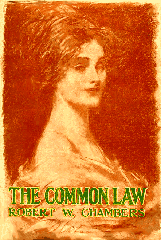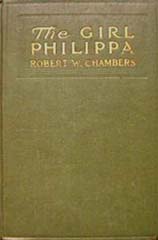| . | . | . |
| Filmography
1916 |
. | . |
| Title and Credits
|
Cast
|
Descr.
|
| . | . | . |
| The Common Law (1916) | ||

USA 1916 B&W Release Date: 15 Oct 1916 Directed by: Albert Capellani Written by Beryl Morhange
Cinematography by
Second Unit Director or Assistant Director
Other crew
The Common Law (1916) Clara Kimball Young Film Corp. Distributor: Lewis J. Selznick Enterprises, Inc; Selznick Pictures. Director: Albert Capellani. Assistant Director: Henri Menessier. Scenario: Beryl Morhange. Camera: Jacques Monteran and Hal Young. Cast: Clara Kimball Young, Conway Tearle, Paul Capellani, Edna Hunter, Lillian Cook, Julia Stuart, Edward M. Kimball, Lydia Knott, D.J. Flanagan. Refined but impoverished woman becomes an artist's model and falls in love with a painter whose parent's don't approve. 7 reels. LOST Her mother's death leaves Valerie West destitute, so she goes to work as an artist's model and becomes romantically involved with two painters: the unpredictable Querida, who does not believe in marriage, and the wealthy Neville, who wants Valerie for his wife. Stephanie, a young woman who had been engaged to Neville, pleads with Valerie not to marry him, and she agrees, knowing that Neville's parents do not approve of her lower-class background. At a New Year's party Valerie tries to placate Neville by agreeing to spend the night with him on June 1. In the months leading up to June, Valerie kills Querida when he tries to force himself upon her, and Neville's parents, realizing how deeply their son loves Valerie, finally consent to their marriage. The Common Law Cast: Clara Kimball Young (Valerie West)
|
Cast (in credits order)
Clara Kimball Young .... Valerie West
rest of cast listed alphabetically Charles Craig
|
Artist and model in love. He is
from the upper class and can not marry her because of his family, she just
wants to climb in bed with him without ritual of the church but he won’t.
The Common Law (1916) Clara Kimball Young Film Corp. Distributor: Lewis J. Selznick Enterprises, Inc; Selznick Pictures. Director: Albert Capellani. Assistant Director: Henri Menessier. Scenario: Beryl Morhange. Camera: Jacques Monteran and Hal Young. Cast: Clara Kimball Young, Conway Tearle, Paul Capellani, Edna Hunter, Lillian Cook, Julia Stuart, Edward M. Kimball, Lydia Knott, D.J. Flanagan. Refined but impoverished woman becomes an artist's model and falls in love with a painter whose parent's don't approve. Synopsis: The Common Law proved a major
step upward in the career of Clara Kimball Young. Young plays a woman of
wealth who is left penniless when her mother dies. Supporting herself as
an illustrator's model, Young is forced to defend herself against a hotblooded
Spanish artist (Paul Cappelani), and to briefly, and tearfully, distance
herself from the man she truly loves. Based on a novel of the same title
by Robert W. Chambers, The Common Law was filmed three times. The
1923 version starred Corinne Griffith, while the 1931 talkie adaptation
top-billed Constance Bennett. ~ Hal Erickson, All Movie Guide
|
| Review from Variety, September 29, 1916
THE COMMON LAW Valerie West Clara Kimball Young Neville Conway Tearle Querida Paul Capellani Rita Edna Hunter Stephanie Lillan Cook Mrs. Neville Julia Stewart Mr. Neville Edward M. Kimball Mrs. West Lydia Knott Ogilvy D.J. Flanagan Lewis J. Selznick has released the first of the Clara
Kimball Young pictures, a seven reeler entitled "The Common Law," from
the book of the same title by Robert W. Chambers, directed by Albert Capellani.
From an artistic standpoint the picture is very well done, following the
story of the book so closely that it contains all the weakness of the original
novel as well as all the strong punches, and to Mr. Capellani must be given
credit for having achieved an exceedingly artistic production from the
scenic, lighting and acting standpoint. A splendid cast was assembled to
support the acting of Miss Young, who played the stellar role with distinction.
But the picture in itself is too long from the exhibitors' standpoint.
It ran just a little longer than an hour and three-quarters at the private
showing which was given at the St. Regis Hotel last week. But for that
matter nearly all seven-reel pictures are too long for the big business
possibilities of the usual exhibitor, and in the case of "The Common Law
there are several scenes that could be cut out entirely, not only as an
aid to the picture itself, but as a help to the story. It would be a simple
matter to cut at least a thousand feet from the picture, and this would
speed up the action, which at times is draggy and help the picture from
the exhibitor's standpoint by shortening the running time. At the very
start of the picture there is entirely too much cutting back and forth
in the scenes leading up to the real action of the pictures's plot. Valerie
West (Clara Kimball Young) is a girl of refinement and education who left
practically destitute through the death of her mother, is forced into accepting
a position as a model. The most thrilling scenes are those in the studio
of Neville, where Valerie is posing "in the nude." Here the director has
done his best work. He has worked out an idea of showing but part of the
form of the woman and leaving those who view the picture to use their imagination
as to the rest. They are scenes that could have easily been overdone and
made salacious and suggestive in the hands of an overzealous producer,
but Mr. Capellani has given just the required touch. At this time Valerie
is in demand and Querida (Paul Capellani), a Spanish artist, becomes infatuated
with her. His law in regard to women is "the common law;" no marriage for
him. His life is "just one woman after another." However at this point
Stephanie (Lillian Cook), Neville's adopted sister, who is in love with
him and who, it is generally conceded by relatives and friends, is to wed
him enters the picture. She has been neglected by Neville, who has fallen
in love with his model. She pleads with Valerie to leave him before he
ruins his career, and Valerie promises that she will never marry him. Then
to crush down her emotion she joins Querida at a New Year's Eve party.
(Here is where a slight doubt enters the mind as to how a girl who has
been naught but a model and who a short time before was poverty stricken,
managed to gather so many wonderful clothes in so short a time by simply
posing.) Neville sees her at the party and takes her from it to his studio,
proposes to her and is put off, after being refused, by Valerie promising
to give herself to him on the first of June without the formality of a
ceremony. In the intervening months the tangled threads of the plot are
straightened out and after Valerie manages to kill Querida by throwing
him out of the window of her apartment when he attacks her, the Neville
family give their consent to the marriage of the son and his model. As
a money-getter "The Common Law" will prove a box-office attraction of the
first rank, but it is a picture that one will have to play for more than
a day in order to get the benefit of the cumulative advertising value.
|
Review from Moving Picture World, October 7, 1916
"The Common Law"
"The Common Law," a seven-reel picturization of the novel
by Robert W. Chambers presented by Lewis J. Selznick and Clara Kimball
Young Film Corporation, is truly a remarkable production. The appeal of
Clara Kimball Young in this picture is irresistible, and she is surrounded
by an excellent cast. If the characters in Mr. Chambers's novel had walked
out of the pages of his book they could scarcely have been more true to
type than they appear in this picture. The seven reels are a quite faithful
visualization of the sociological plot, with the exception that several
of the more objectionable -- or what could have been made more objectionable
-- situations are noticeable by their propriety.
|
|
| . | . | . |
| The Fighting Chance (1916) | ||

USA 1916
Written by ???
Art Direction by
|
Cast
Violet Horner .... Silvia
The Fighting Chance Cast: E. K. Lincoln (Stephen Siward)
|
Story of a society drunk fighting alcoholism with the love of a good but flawed woman. Wall Street battle royale, where love as well as finance hangs in the balance |
| . | . | . |
| The Girl Philippa (1916) | ||

USA 1916 Black and White
Directed by S. Rankin Drew Written by ???
Cinematography by
Other crew
The Girl Philippa Cast: Anita Stewart (Philippa)
|
Cast (in alphabetical order)
Anita Stewart .... Philippa
|
Plot Summary:
Philippa, a Balkan princess, is kidnapped and taken to France as a child at the turn of the century. There she is raised among spies and in low society. As Philippa matures, and war approaches, she falls in love with an American artist, who helps her when she discovers her true identity and endeavors to return to her native land. Summary written by Jim Beaver {jumblejim@prodigy.net}

 Synopsis: : S. Rankin Drew, son of noted stage star Sidney Drew, directed this feature and co-starred in it, along with lovely Anita Stewart . Like an uncountable number of other films throughout the teens and twenties, it was based on a Robert W. Chambers story. Drew plays an American artist in France who snubs a cabaret cashier (Stewart) until he finds out she's a longlost princess. A romance grows from this unpromising start, and the pair help an English secret service agent (Frank Morgan) in his efforts against the Germans. Meanwhile, the owner of the cabaret (Anders Randolph ) is willing to go with whichever side offers the most money. No film set in Europe during this era could escape without a few battle scenes, and this picture has its share for a climax. ~ Janiss Garza, All Movie Guide NOTE: Remember, romantic Frank Morgan would go on to be the wonderful Wizard of Oz in the classic 1938 version. |
| Copyright © 1998, 2002, 2003 Miskatonic University Press / yankeeclassic.com, all rights reserved | .image restoration
by
www.yankeeclassic.com/web |
. |